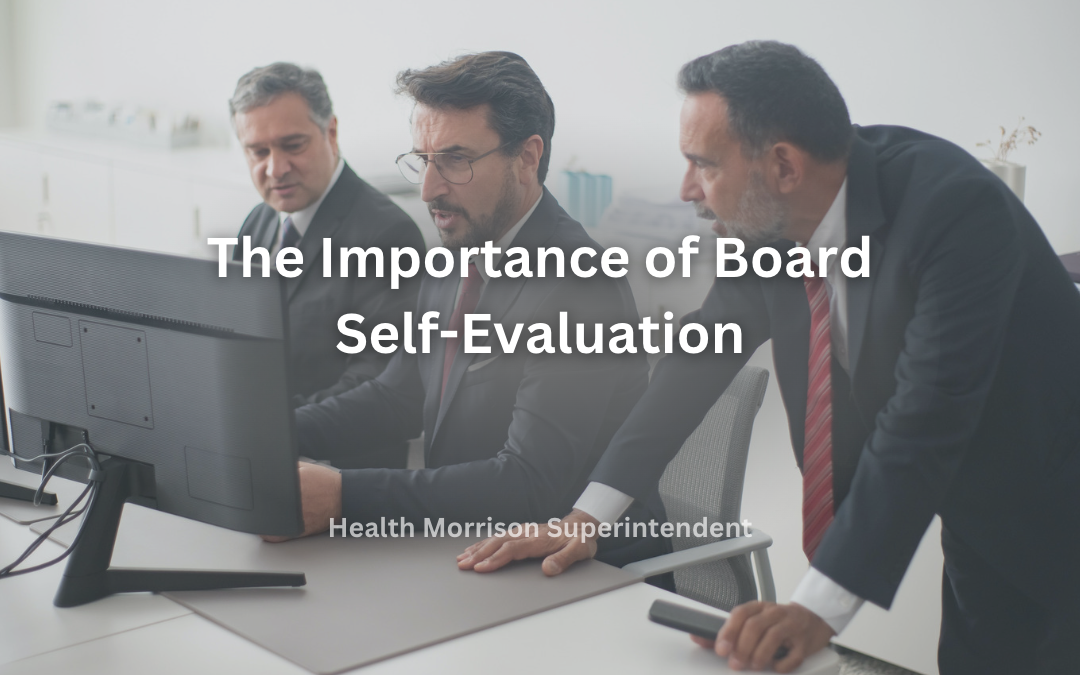Each year, the superintendent of schools should receive an evaluation by the district’s board of trustees, as is required by most state statutes and is the expectation for all school district employees. However, what about an evaluation for boards of trustees? It might be said that their evaluations are the elections that determine whether they are returning to serve another term or unseated from their responsibilities. While this has some truth to it, the election process is more an evaluation of and individual board member rather than the board as a whole. Done well, a board self-evaluation will not only assist a board in determining how well it is performing its required responsibilities, but it can also help ensure a strong leadership team (with the superintendent) in moving a district forward.
If a board decides to pursue self-evaluation there are some things to consider. First, the evaluation instrument used is very important. There may be a temptation to craft such a tool internally, but such a decision should only be made after considering existing instruments. State school board associations have model board self-evaluations and often have suggested practices and procedures to go along with it. This allows a board to be able to ensure a quality instrument is being used and the allows for the possibility of benchmarking with other districts in the state to address areas of identified growth.
Next, a board must determine if the self-evaluation will be facilitated. While there may be a temptation to have the board president lead such a discussion, if there are issues with some board members and the leadership team, this can prove problematic. It is also an challenging situation to place the superintendent in leading this process; as the only employee of the board the superintendent should be protected from having to resolve issues among board members that might surface during the evaluation process. Again, state associations often have trained facilitators who can help ensure a quality process and value-added follow up discussions.
Board self-evaluations are best completed when the superintendent is also being evaluated. This ensures that board members are being reflective of their own performance and behaviors while also considering accountability for the superintendent. Completing both evaluations at the same time will allow for more robust conversation about strengths and areas of improvement for the Team of 8, (superintendent and board members assuming there are seven) and actionable steps to follow after the evaluations are concluded.
Discussing the results of the board self-evaluation at a board workshop is another strong suggestion. All work that a board does is in the public, and a workshop is no exception. However, since most board workshops are generally less attended by the public and media; this arrangement allows for more thoughtful reflection among board members. If the board self-evaluation focuses on basic governance and adherence to protocols and policies, there is less likely to be disagreements or arguments. If the focus is on how the board and superintendent function as a cohesive team, there is a greater probability that some underlying issues may arise. While some boards might want to avoid such public discourse, strong boards are not afraid to address issues and chart ways to improve and strengthen relationships in performing their duties.
Many boards can find reasons not to do a self-evaluation. Strong boards realize that a self-evaluation models the same basic expectation that school district employees are held to and when done well, can serve to strengthen the team and prepare them for greater challenges that may lie ahead.

